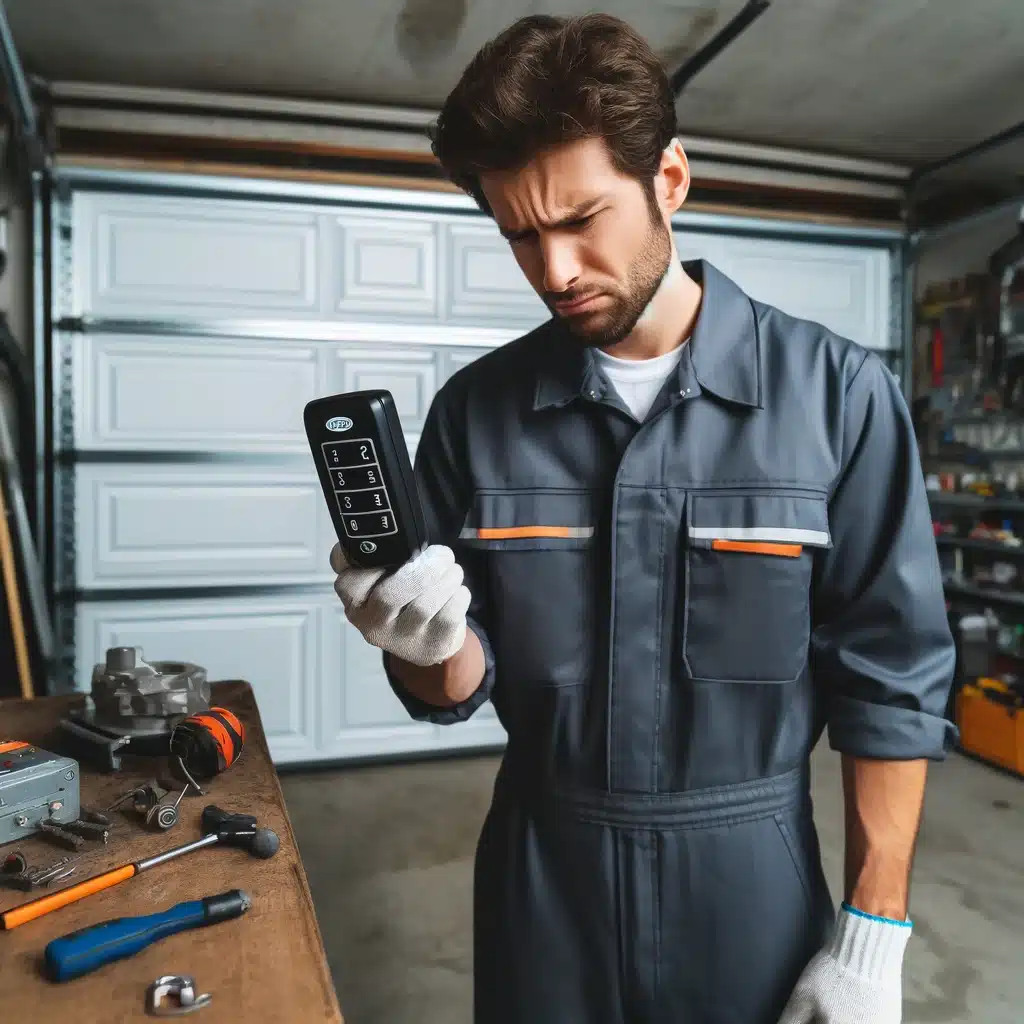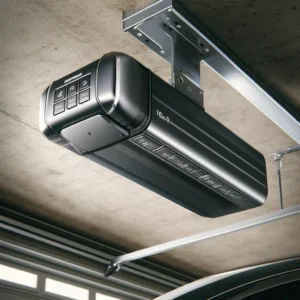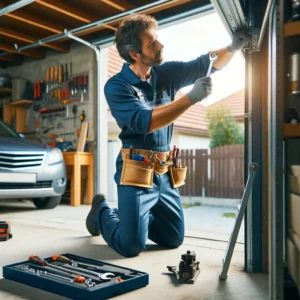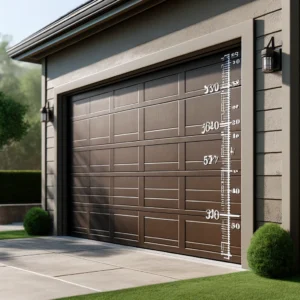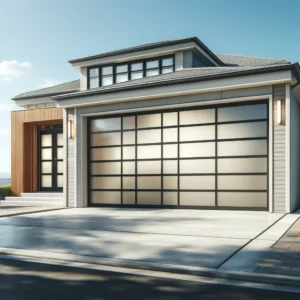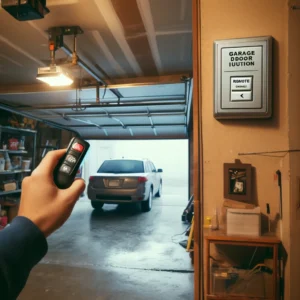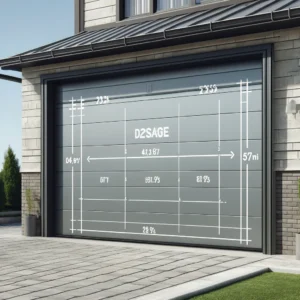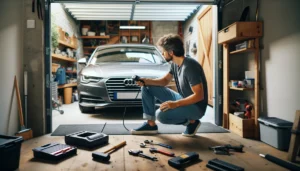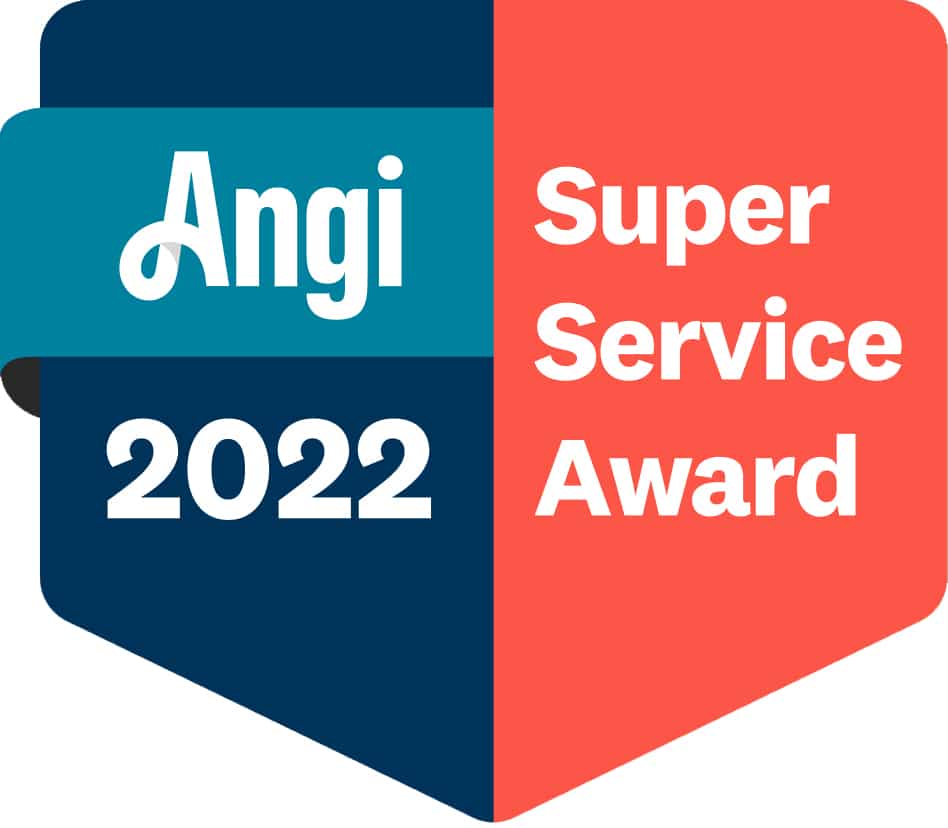Experiencing issues with your garage door not opening can be more than just an inconvenience; it often disrupts your day and can pose a security risk. Before calling a professional, you can troubleshoot several common issues independently. Understanding why your garage door won’t open can save you time and money, and in many cases, the fixes are simple and require minimal tools.
By exploring common reasons behind a malfunctioning garage door, you’ll be equipped to identify the problem’s cause quickly. Whether it’s due to dead batteries in your remote, misaligned tracks, or something more complex, solving the mystery begins with learning the basics. Identify and resolve these common difficulties, highlighting why your garage door may not open.
Common Reasons Why Your Garage Door Won’t Open
When your garage door refuses to budge, the frustration is palpable. Understanding the most common culprits behind this issue can pave the way for a swift resolution. Here, we delve into three reasons why your garage door might need to operate as expected.
Broken Torsion Springs
Torsion springs play a pivotal role in the operation of your garage door, counterbalancing its weight as it moves up and down. These springs are under significant tension and, over time, can wear out or break, often with a loud noise resembling a firecracker. A broken torsion spring could be to blame if your garage door suddenly stops working or only opens a few inches before shutting again. Given the potential danger due to the high spring tension, this is not a DIY repair, so professional help is recommended.
Misaligned Photo-Eye Sensors
Modern garage doors are equipped with photo-eye sensors as a safety feature. These sensors are located on both sides of the door at about knee height and emit an invisible beam between them. If this beam is interrupted or the sensors are misaligned, the door won’t close, and if already closed, it may refuse to open. Misalignment or blockage can be due to various reasons, including dirt and debris obscuring the lens or physical misalignment from being bumped or knocked.
Dead Remote Batteries
At times, the simplest explanation is the right one. The batteries may die if your garage door opener remote does not work. This is a common oversight, as the lifespan of these batteries can vary, and their depletion might only sometimes be on one’s radar. Before assuming more complex issues, check and replace the batteries in your remote to see if this resolves the problem.
Troubleshooting Steps
Once you’ve identified a potential reason why your garage door might not be opening, the next step is to troubleshoot these issues. Below, we outline specific steps you can take to address the problems mentioned above. Always remember that safety comes first; if you need clarification or are uncomfortable performing any of these tasks, it’s best to consult with a professional.
Check Torsion Springs for Damage
- Safety First: Ensure your garage door is fully closed before inspecting the torsion springs. Disconnect the garage door opener to prevent automatic operation during inspection.
- Visual Inspection: Look for visible signs of wear or breaks in the springs above the garage door. If you see gaps in the springs or they appear elongated, it’s a clear sign they’re broken or damaged.
- Professional Assessment: Contact a garage door repair service if damage is detected or if clarification is needed. Repairing or replacing torsion springs can be dangerous and should be handled by professionals with the proper tools and expertise.
Adjust Photo-Eye Sensors
- Clean the Lenses: Begin by gently wiping the lenses of the photo-eye sensors with a clean, dry cloth to remove any dirt, dust, or cobwebs blocking the beam.
- Check Alignment: Photo-eye sensors should be pointing directly at each other. If they appear misaligned, carefully adjust them until they are parallel. Some models have lights that turn on or change color when aligned correctly.
- Remove Obstructions: Ensure no large or small objects block the path between the two sensors. Objects that appear out of the way can sometimes interrupt the sensor beam.
- Test the Door: After cleaning and aligning the sensors, test the garage door to see if it operates correctly. If problems persist, the issue may lie within the wiring or require further professional assistance.
Replace Remote Batteries
- Identify Battery Type: Open the remote control unit to determine the type of batteries needed. Most garage door opener remotes use standard AA, AAA, or coin-cell batteries.
- Install New Batteries: Carefully replace the old batteries with new ones, ensuring they are inserted according to the correct polarity. Dispose of the old batteries properly.
- Test the Remote: After replacing the batteries, test the remote to see if the garage door responds. If the door still does not open, try reprogramming the remote according to the manufacturer’s instructions, as it may have lost its connection to the opener.
- Alternate Methods: If a new battery doesn’t resolve the issue, consider using alternative methods to open your garage, such as the keypad or a mobile app, if available. This can help determine whether the problem lies with the remote or the garage door system.
By methodically troubleshooting each of these common issues, you can either rectify the problem yourself or better understand the nature of the issue before calling in a professional. Remember, while some fixes are within the grasp of a handy homeowner, others, particularly those involving high-tension components like torsion springs, warrant professional intervention to ensure safety and proper function.
Additional Causes to Consider
When your garage door won’t open, it’s not just an inconvenience; it can disrupt your day and pose a security risk. Apart from the obvious reasons like dead batteries in your remote or a disengaged emergency release, there are less apparent culprits to consider. Delving deeper into these can help you troubleshoot more effectively.
Power Outages
Power outages are a common but often overlooked reason a garage door won’t open. Most modern garage doors are operated electronically, and the door opener won’t function without power. Even if the power outage is brief, it can still impact the operation of your garage door.
Blocked Door Tracks
The tracks guide the garage door’s movement as it opens and closes. Over time, debris or objects can accumulate or obstruct these tracks, preventing the door from operating smoothly, if at all. Items like rocks, sticks, or accumulated dirt and leaves can block your garage door’s path.
Malfunctioning Garage Door Opener
The garage door opener is the heart of the garage door mechanism. It’s a complex machinery that includes electronics, gears, and chains or belts. Like any electronic device, it can suffer from wear and tear or sudden malfunctions. Problems could stem from internal circuit issues, gear failures, or problems with the opener’s logic board.
Troubleshooting Techniques for Additional Causes
Identifying the cause is half the battle; the next step is effectively troubleshooting these issues. Here are techniques to address these additional causes, ensuring your garage door operates smoothly again.
Resetting the Opener After a Power Outage
If you’re wondering why won’t your garage door open after a power outage, it’s likely because the power outage has disrupted the settings on your garage door opener. This can cause the opener to stop functioning even after restoring the power. To fix this issue, you’ll need to reset the opener.
First, locate the reset button on your garage door opener. Typically, this is on the rear or side of the device. Once you’ve found it, press the reset button or follow the manufacturer’s instructions to reset your opener. The reset process can vary depending on the model and make of your opener, so be sure to refer to the manufacturer’s guide.
After resetting the opener, you may need to reprogram your remotes or keypad according to the manufacturer’s instructions. This will ensure your opener is properly configured and can operate your garage door as intended.
By resetting the opener after a power outage, you can restore normal functionality to your garage door system and get it working again. This straightforward solution can save you time and frustration and help you quickly get your garage door back in working order.
Clearing Debris from Door Tracks
Blocked or obstructed garage door tracks can prevent your garage door from opening and closing properly. It’s important to regularly inspect and clean the tracks to ensure smooth, uninterrupted operation.
- Start by visually inspecting the tracks for any visible obstacles, such as stones, sticks, or built-up dirt and grease. These types of debris can get trapped in the tracks and cause the door to get stuck.
- Once you’ve identified any debris, gently remove it from the tracks with a broom or a soft-bristled brush. For tougher accumulations, use a cloth dampened with a mild cleaning solution to help break down the grime.
- After cleaning the tracks, checking the alignment is a good idea. The tracks should be parallel to each other and perfectly straight. Misaligned tracks can cause additional operational issues, so be sure to address any problems you find.
- Finally, consider lubricating the tracks, rollers, and other moving parts with a garage door-specific lubricant or silicone spray. This will help ensure smooth, quiet operation and prevent future debris buildup.
By regularly inspecting and maintaining your garage door tracks, you can prevent them from becoming obstructed and causing your garage door to get stuck. This simple maintenance task can extend the life of your garage door system and ensure reliable, hassle-free operation.
Testing and Repairing Garage Door Opener Connections
If the garage door opener is the culprit, here are steps to diagnose and potentially fix the issue:
- Check the opener’s power supply. Please ensure the device is plugged in correctly and the outlet is functioning properly. Sometimes, the issue can be as simple as a tripped circuit breaker or a blown fuse.
- Inspect the opener for any visible signs of wear or damage. Pay particular attention to the gears, belts, or chains, depending on your model.
- Test the remote control and wall switch. If the wall switch operates the door but the remote doesn’t, the issue might be with the remote’s batteries or its programming.
- Examine the wiring connections from the opener to the switch. Loose or disconnected wires can disrupt the signal. If it is comfortable and safe, you can reattach these connections, ensuring they’re secure.
- If the opener still doesn’t function appropriately after these steps, consult the manual for troubleshooting specific to your model, or consider calling a professional. Some issues, particularly those related to the logic board or internal components, may require specialized expertise.
Regular maintenance and prompt troubleshooting of these additional causes can often prevent or quickly resolve issues with your garage door not opening. Being proactive and knowledgeable about these common issues ensures the smooth operation of your garage door, keeping your day running smoothly and your home secure.
Conclusion
Experiencing issues with your garage door not opening can be frustrating, impacting your daily routine and security. In this comprehensive guide, we’ve explored some of the most common reasons why your garage door might not operate as it should. From power source problems and misaligned or blocked photo eye sensors to issues with the remote, keypad, or wall switch, understanding the root cause is the first step toward a solution. We also delved into the significance of checking the garage door’s tracks and springs and the importance of routine maintenance to ensure smooth operation.
Addressing these common problems can often be straightforward, involving simple checks and minor adjustments. However, it’s crucial to remember that working on garage door springs and cables can be dangerous and is best left to professionals. If, after troubleshooting, your garage door still refuses to budge, it may be time to call in experts who can diagnose and resolve the issue efficiently.
End Note
As Kansas City’s leading garage door repair contractor, Team Taylor Door understands the inconvenience and security concerns of a malfunctioning garage door. With years of experience under our belts, our team of skilled technicians is dedicated to providing prompt, reliable service to get your garage door back in working order. We can handle the challenge, whether a simple fix or a more complex repair.
Remember, regular maintenance by professionals can prevent many common garage door problems from arising. At Team Taylor Door, we offer comprehensive maintenance services to keep your garage door operating smoothly and extend its longevity. Trust us to care for your garage door needs, ensuring peace of mind and a seamless, functional entryway to your home.
In conclusion, while troubleshooting common garage door issues can be a DIY task for some, it’s essential to recognize when professional assistance is needed. By understanding the potential causes and taking proactive steps toward maintenance, you can minimize the likelihood of encountering these problems. However, when in doubt, reaching out to Team Taylor Door ensures you get the expertise and quality service required to address your garage door concerns effectively. Remember our tips, but remember, we’re just a call away whenever you need our help.
Frequently Asked Questions
When it comes to garage door issues, some questions pop up more often than others. Below, we address the most common inquiries to help you quickly understand and remedy your garage door problems.
Why won’t my garage door open even with manual effort?
If your garage door doesn’t budge even when you lift it manually, the issue might be with the springs or the track. Broken springs can prevent the door from opening, as they play a crucial role in lifting the door’s weight. Similarly, if there’s an obstruction in the track or it’s misaligned, the door won’t move smoothly. It’s best to contact a professional to inspect and repair these components.
Can weather affect my garage door’s functionality?
Absolutely. Extreme temperatures can cause the metal components of your garage door system to contract or expand, leading to malfunctions. Moisture can also affect wooden doors, causing them to swell and get stuck. Regular maintenance, including lubricating moving parts, can help mitigate these issues.
What does it mean if my garage door opens partially and then stops?
This problem is often related to the garage door opener settings. If the travel limits, which instruct the door how far to move before stopping, are set incorrectly, your door might stop prematurely. Consult your owner’s manual to adjust these settings, or if you need help, seek professional assistance.
Why does my garage door close and then immediately re-open?
This issue is commonly linked to the safety sensors at the bottom of the door tracks. If these sensors are misaligned, dirty, or something obstructs the door’s path, they signal the opener to reverse the door’s motion to prevent accidents. Ensure the sensors are clean and aligned correctly and there are no obstructions.
How often should garage door springs be replaced?
Garage door springs are under constant tension and can wear out over time, posing a risk if they break. On average, torsion springs have a lifespan of 10,000 cycles, with one cycle being one opening and closing of the door. It might be anywhere from 7 to 12 years, depending on your door usage. Regular inspections by professionals can assess their condition and recommend replacements when necessary.


